Dressing the Part
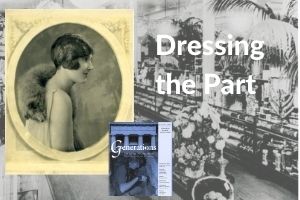
Department Store Fashions and the Stylish Jewish-American Woman
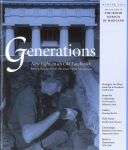 Written by Melissa Martens Yaverbaum, former JMM curator. Originally published in Generations – Winter 2001.
Written by Melissa Martens Yaverbaum, former JMM curator. Originally published in Generations – Winter 2001.
Baltimore’s grand department stores were more than just retail establishments – they were also venues for fantasy and transformation. The first generation of grand department stores – Joel Gutman’s Hutzler’s, Hochschild Kohn’s, the Hecht stores, and Posner’s (later Stewart’s) – were shaped like palaces, designed for service, and decorated with all that was elegant. The department stores transported customers to a world that was fashionable, and fed their social aspirations with fine goods and clothing.
Because clothing was one’s social uniform, dress was one of the most immediate ways to create identity, demonstrate status, and set aspirations in motion. Beginning in the 1880s and 1890s, Baltimore’s downtown department stores offered women new opportunities to acquire the finest imported goods, silks, and laces under one roof at fixed prices. Handsomely displayed, cleverly advertised, and regularly available for the first time in Baltimore, department store clothing set new standards of fashion and taste for women. For generations, the department stores were key contributors to the creation of identity through appearance.
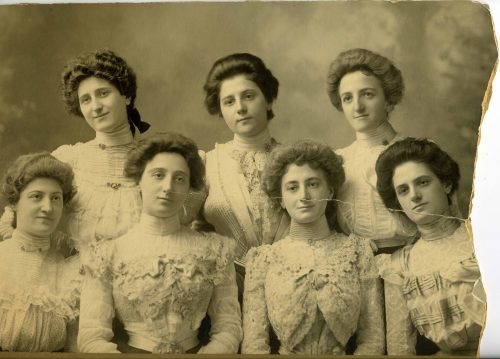
After the Civil War, the American clothing industry expanded rapidly. Clothing production shifted from individual construction to factory-made production, and ready-to-wear clothing for both men and women became widely available in a variety of price ranges. Department stores were noted for introducing ready-made women’s clothing into the Baltimore marketplace, and in time, women’s ready-to-wear goods became the leading stock of the department stores.[1] Prominent department stores were also advocates for fashion, encouraging consumers to purchase the latest in seasonal styles.
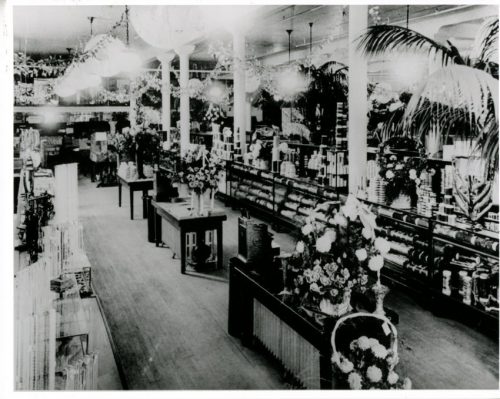
As a result, the department stores had a profound influence on women, especially Jewish women, who sought to establish their social position through appearance and fashion. For immigrant newcomers, department store clothing represented America. For those already established, clothing was a means to assert their arrival in the middle and upper classes. As Jewish women adapted to American ways, fashionable dress began to inform and shape the style of Jewish social life and religious observance. The consumption of department store goods, whether by looking or purchasing, became a key component of Jewish-American womanhood.
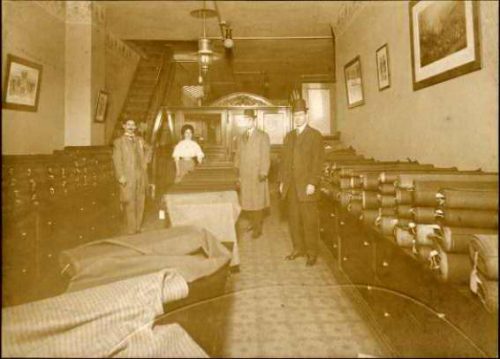
For immigrant Jews from Russia and Eastern Europe, department stores were educators of taste and venues for occasional purchases. The newcomers struggled with the complex challenges of assimilating into American life – choosing careers, establishing homes, and overcoming language barriers. Most of those who arrived between 1880-1920 lived modestly, especially in the first generation. But even poor immigrants found that changing their appearance was one of the quickest and most effective ways to adapt to American life. In the larger process of Americanization, changing one’s outward appearance was relatively easy to accomplish in a relatively short period of time. In her autobiographical book The Promised Land, the new immigrant Mary Antin describes the “dazzingly beautiful place called the department store” where she could replace her “hateful homemade European costumes” for “real American, machine-made garments.”[2]
Continue to Part 2: A Permanent Home, publishing on April 15, 2019.
1] Philip Kahn, Jr., “And So They Came, And Sew They Did,” Threads of Life: Jewish Involvement in Baltimore’s Garment Industry (Baltimore: The Jewish Historical Society of Maryland) 4.
[2] Quoted in Barbara A. Schreier, Becoming American Women: Clothing and the Jewish Immigration Experience 1880-1920 (Chicago: Chicago Historical Society, 1994) 68.
